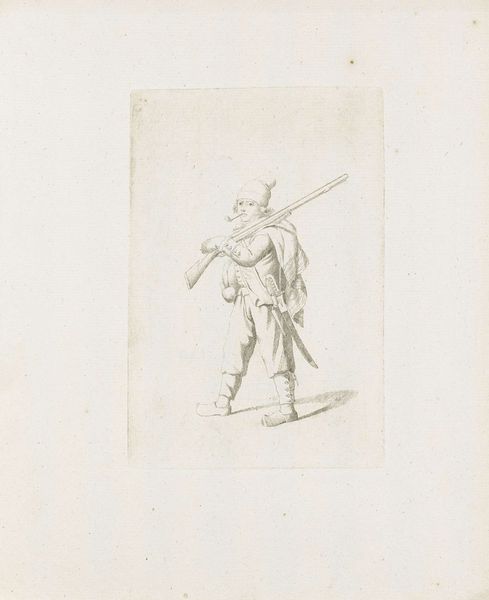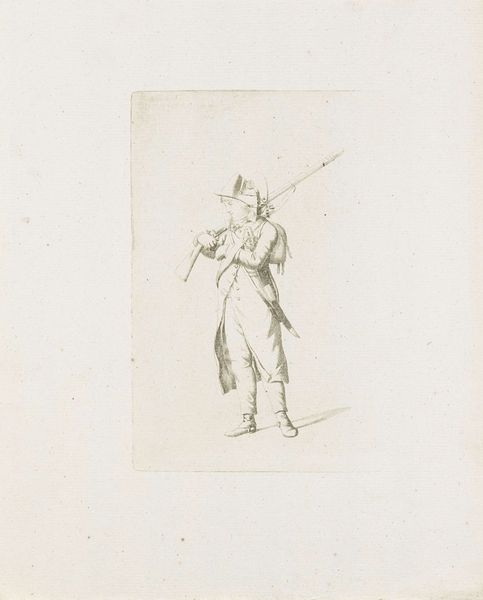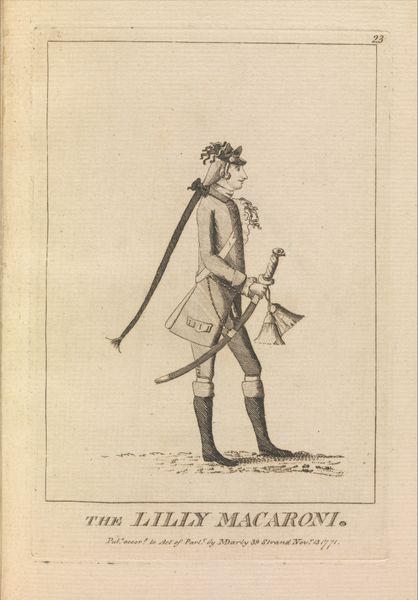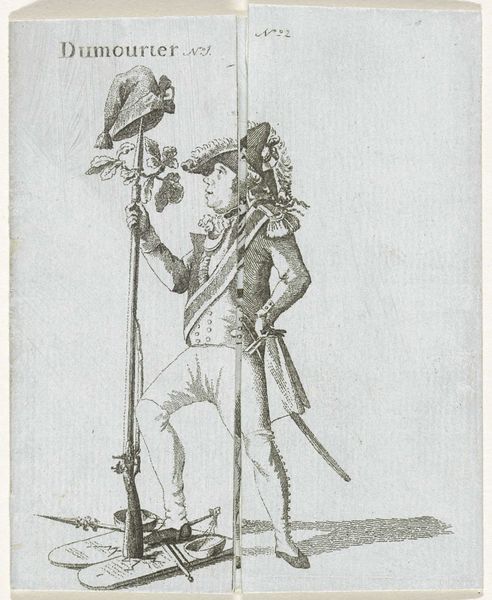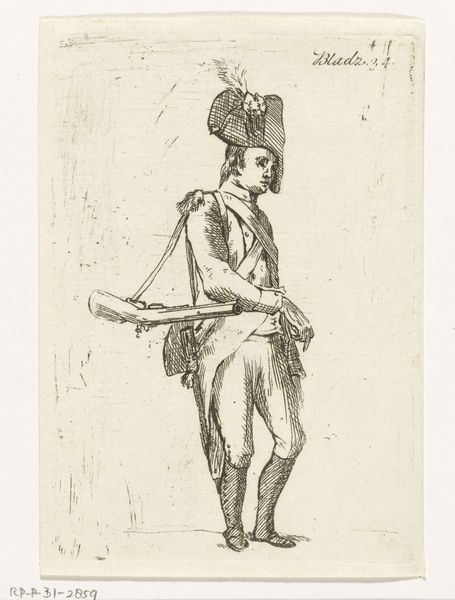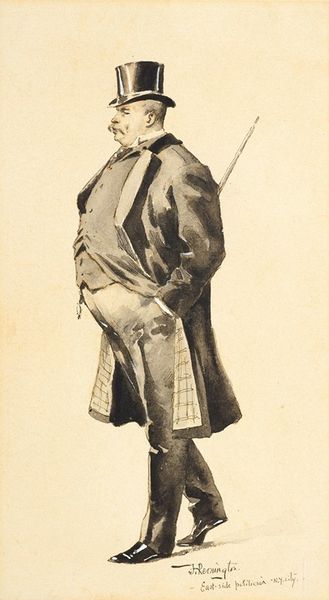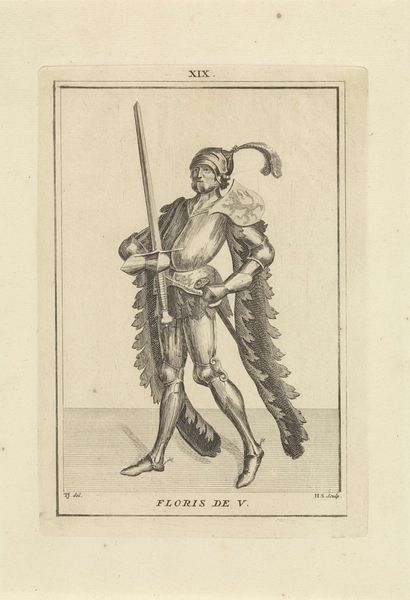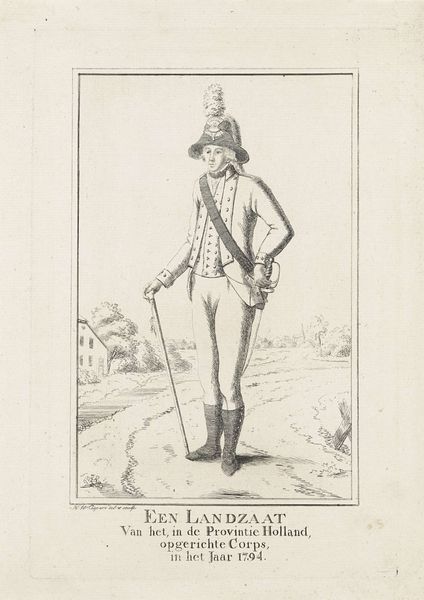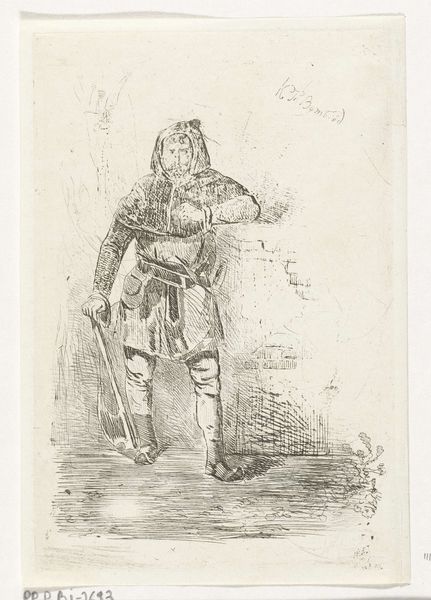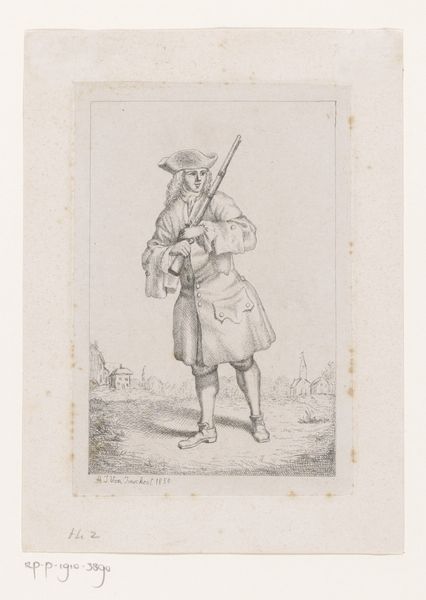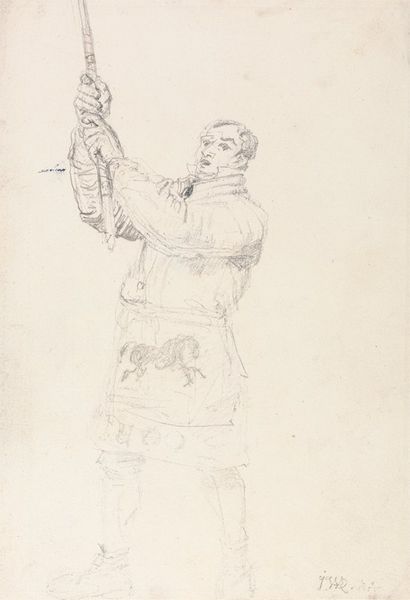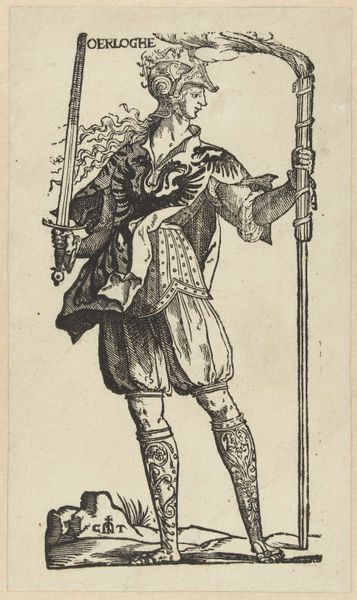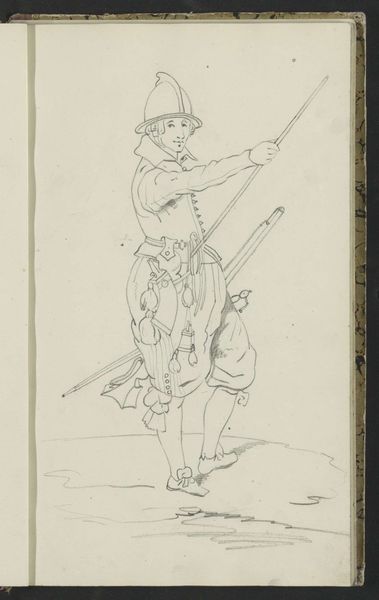
drawing, ink
#
portrait
#
drawing
#
caricature
#
figuration
#
ink
#
romanticism
#
line
#
history-painting
Dimensions: height 278 mm, width 187 mm
Copyright: Rijks Museum: Open Domain
Editor: So, here we have "Napoleon met geschoten bok, 1812," a drawing in ink by Wijnand Esser, likely made between 1814 and 1819. It definitely has a satirical, almost cartoonish feel to it. That posture... and is that a dead animal slung over his shoulder? What's your take on this? Curator: Oh, this piece is pure theatre! I love how Esser uses line and form to create this almost tragicomic figure. Look at that stiff posture, the slightly bugged-out eyes. The man's weary, burdened perhaps. And yes, that’s a shot buck he’s hauling, a clear symbol of... well, a botched hunt, shall we say? It suggests defeat disguised as triumph, doesn't it? The artist clearly wanted to capture more than just physical likeness. Do you sense a subtle mocking of Napoleon's grand ambitions? Editor: Absolutely! That buck seems to weigh him down more than any heroic spoils would. The title mentions Moscow, which was a devastating campaign for Napoleon. Curator: Precisely. Consider the historical context: Napoleon’s disastrous Russian campaign. Esser uses caricature not just to poke fun, but to deliver a stinging commentary on power and hubris. It’s like saying, "Here's your glorious leader, burdened by the spoils of a Pyrrhic victory.” The Romantic era was all about emotional intensity, but it was also about questioning authority, and this image walks that tightrope brilliantly. The line work itself feels almost frantic, doesn't it? Editor: It does! Like it’s capturing a moment of anxious instability. I see now how it all comes together - the pose, the line work, the buck. I initially just saw a funny drawing. Curator: Isn't that the joy of art? To be surprised by its depths. It seems that what appeared funny holds profound historical critique, wouldn’t you agree? I found Esser’s work humorous and thought provoking.
Comments
No comments
Be the first to comment and join the conversation on the ultimate creative platform.
